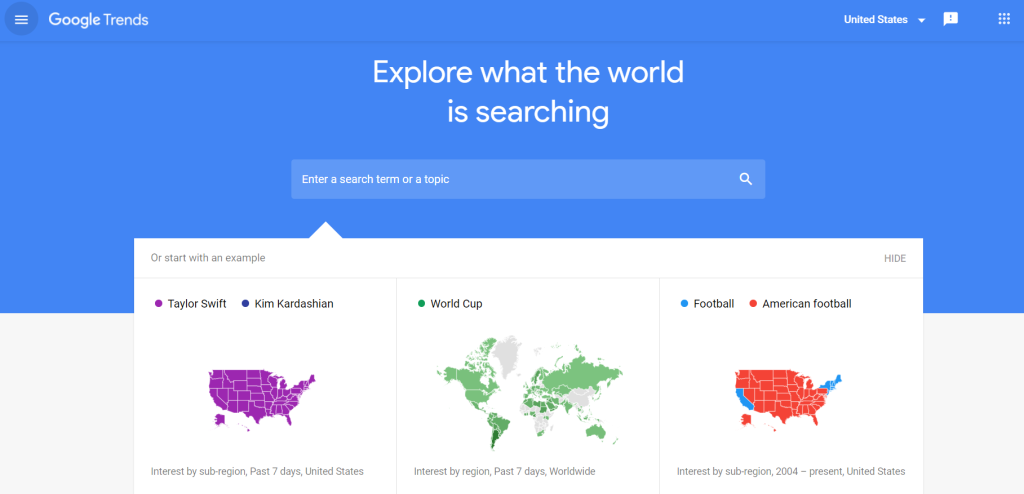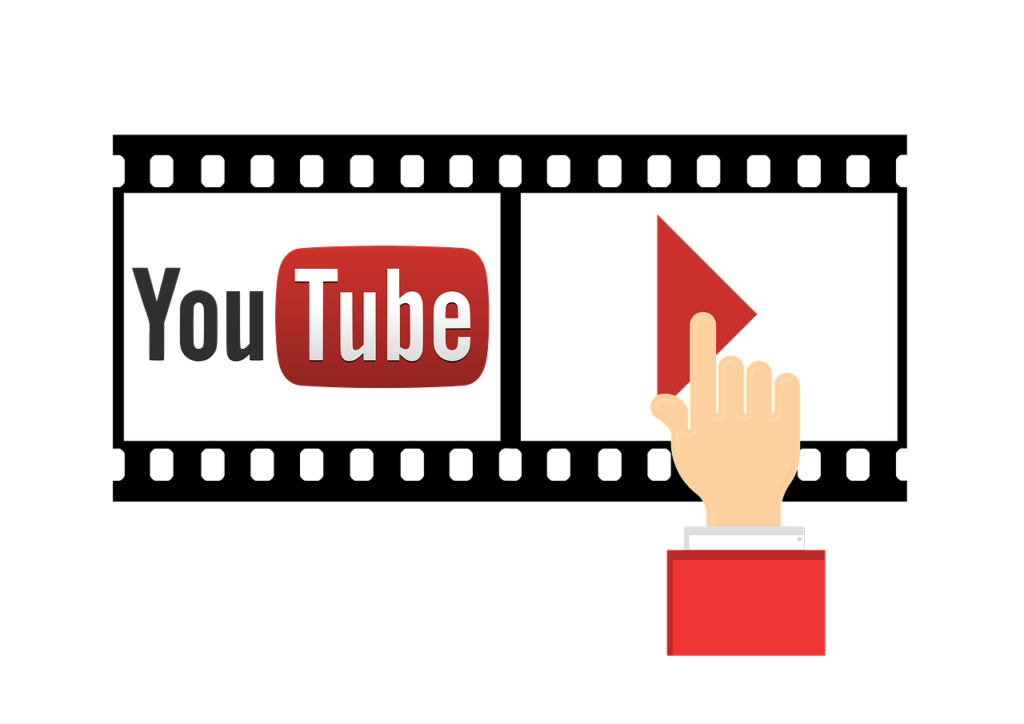YouTube is the second largest search engine in the world, with over 2 billion monthly active users. It’s no surprise that many content creators are turning to this platform to share their ideas, connect with their audience, and build their brands. However, with so much content available, it can be challenging to stand out and attract new viewers.
One way to gain visibility and grow your channel is by staying on top of the latest YouTube trends. By understanding what’s popular and what’s resonating with viewers, you can create videos that are more likely to be seen and shared. In this article, we’ll explore some of the top YouTube trends and how you can leverage them to increase your reach and engagement.
Table of Contents
Understanding YouTube Trends
What are YouTube Trends?
YouTube trends refer to the patterns or behaviors that emerge on the platform among its users, such as specific video formats, popular topics, and viral memes. These trends can help you understand what content is currently popular and what viewers are engaging with.
Why do YouTube Trends change?
YouTube trends change for a variety of reasons, including shifts in popular culture, emerging technologies, and changes in viewer behavior. For instance, a new meme or trend may go viral and become popular among viewers, prompting creators to create content around it. Similarly, new technology may allow creators to experiment with new formats and approaches to video creation.
How are YouTube Trends measured?
YouTube trends are measured using various data points, including views, likes, comments, and shares. YouTube also uses algorithms and machine learning to analyze user behavior and engagement to identify trends and recommend content to viewers.
Why YouTube Trends Matter for Your Channel?
Increase Visibility and Reach
By creating content that is aligned with YouTube trends, you can increase your visibility and reach on the platform. This can lead to more views, subscribers, and engagement, which can help grow your channel and increase your influence.
Attract New Viewers
Creating content that aligns with YouTube trends can also attract new viewers who may not have discovered your channel otherwise. By tapping into what’s popular and relevant, you can reach a wider audience and build your brand.
Increase Engagement and Shares
By creating content that aligns with YouTube trends, you can also increase engagement and shares among your existing audience. Trending content tends to be more shareable and conversation-worthy, which can help increase engagement and build a community around your channel.
Types of YouTube Trends
Seasonal Trends
Seasonal trends refer to content that is popular during a particular time of the year, such as holiday-themed videos or content related to a particular season.
Industry-Specific Trends
Industry-specific trends refer to content that is relevant to a particular industry or niche, such as beauty tutorials or gaming content.
Viral Trends
Viral trends refer to memes, challenges, or other content that has gone viral on social media or the internet at large. These trends can be short-lived but can also have a significant impact on user behavior and engagement.
Social Media Trends
Social media trends refer to content that is popular on social media platforms, such as Instagram or Twitter. These trends can provide inspiration for creating content that resonates with a broader audience.
Platform-Specific Trends
Platform-specific trends refer to content that is popular specifically on YouTube. These trends can include popular video formats, such as vlogs or tutorials, as well as emerging technologies or features on the platform.
How to Identify and Leverage YouTube Trends?
Now that you understand the importance of YouTube trends, it’s time to learn how to identify and leverage them to grow your channel.
Use Google Trends

Google Trends is a free tool that allows you to see what people are searching for on Google and YouTube. You can use this tool to identify popular topics and keywords related to your niche and create content around them.
Monitor Social Media
Social media platforms, such as Twitter and Instagram, can also provide insight into what content is popular and trending. By monitoring hashtags and following relevant accounts, you can stay up-to-date with emerging trends and create content that aligns with them.
Analyze Your Competitors
Analyzing your competitors’ channels can also provide insight into what’s popular and resonating with viewers. Look at their most popular videos and see if there are any common themes or formats that you can adapt for your own content.
Stay Informed and Curious
Finally, staying informed and curious about emerging trends and technologies can help you stay ahead of the curve and create content that resonates with viewers. Attend industry conferences, read blogs and news articles, and follow relevant thought leaders to stay up-to-date with the latest trends and insights.
Strategies for Creating Trending Videos
Creating videos that ride the wave of YouTube trends can be an effective way to grow your channel. Here are some strategies to consider:
Research Your Audience

Understand your audience and what they’re interested in. Use this information to identify trends that are relevant to your viewers and create content around those trends.
Experiment with Different Formats
Don’t be afraid to try different video formats to see what resonates with your audience. Consider creating videos in the form of tutorials, reviews, interviews, or vlogs.
Optimize Your Title and Description
Use keywords in your video’s title and description that are relevant to the trend you’re targeting. This will help your video show up in search results related to that trend.
Use Eye-Catching Thumbnails
Thumbnails are the first thing viewers see when scrolling through search results, so make sure they’re eye-catching and relevant to the trend you’re targeting.
Promote Your Video
Once you’ve created your video, promote it on your social media channels and through email marketing to increase visibility and engagement.
How YouTube Algorithm Evolved?
The YouTube algorithm has undergone several significant changes and updates since its inception. Here’s a brief overview of how the YouTube algorithm has evolved over time:
Early Days
In the early days of YouTube, the platform’s algorithm was relatively simple. Videos were ranked based on views, with the most viewed videos receiving top billing in search results and recommendations.
Engagement
In 2012, YouTube introduced the “Watch Time” metric, which measures the amount of time viewers spend watching videos. This metric replaced views as the primary ranking factor, and engagement metrics like likes, dislikes, and comments became more important.
Personalization
In 2016, YouTube introduced the “Home” and “Trending” tabs, which personalized recommendations based on a viewer’s watch history, search history, and engagement metrics. This update made recommendations more relevant and personalized to individual viewers.
Machine Learning

In 2018, YouTube introduced machine learning to the recommendation algorithm, which analyzed vast amounts of data to better understand viewer preferences and make more accurate recommendations.
Responsibility
In 2019, YouTube made significant changes to the algorithm to address concerns about harmful content and misinformation on the platform. The algorithm now prioritizes authoritative sources and quality content, and videos with potentially harmful content are demoted in search results and recommendations.
Transparency
In recent years, YouTube has made efforts to increase transparency around the recommendation algorithm. The platform has released several reports and tools that allow users to see why specific videos are recommended to them and provide feedback on recommendations.
How Does the YouTube Algorithm Work in 2023?

If you’re a content creator on YouTube, you’re probably familiar with the YouTube algorithm. This algorithm determines which videos get promoted on the platform and which don’t. In 2023, the YouTube algorithm is more sophisticated than ever before, with a focus on user engagement and satisfaction. Here’s how it works:
Video Content and Relevance
The YouTube algorithm focuses on the relevance of the video content to the viewer. The video content must match the viewer’s interests and preferences. The algorithm considers the video’s title, description, and tags to determine its relevance to the viewer.
Watch Time and User Engagement
Watch time is the most important factor in determining the success of a video on YouTube. The algorithm prioritizes videos that keep viewers engaged for longer periods. Higher engagement rates (likes, comments, and shares) are also crucial factors in determining a video’s success. The algorithm favors videos that generate higher user engagement.
Video Quality and Production
The production value of a video is also a significant factor in determining its success. Videos with higher production values, better lighting, and higher quality audio are more likely to be recommended to viewers. Additionally, videos with higher video resolution (such as 4K) are given priority by the algorithm.
Consistency of Uploads
The algorithm also favors creators who upload content consistently. Creators who post videos on a regular schedule are more likely to be recommended to viewers. The algorithm also rewards creators who upload content that aligns with their niche and audience.
User Feedback and Flagging
The algorithm is also sensitive to user feedback, including likes, comments, shares, and dislikes. YouTube encourages users to flag videos that violate the platform’s policies. The algorithm considers the user feedback and flagging when ranking videos.
Personalization and Recommendations
The YouTube algorithm uses artificial intelligence and machine learning to personalize content recommendations to viewers. The algorithm considers the viewer’s search history, watch history, and demographics to personalize video recommendations.
How Does YouTube Recommend Videos?
YouTube’s video recommendation system is one of the most crucial components of the platform. The recommendation algorithm uses a combination of user data, video metadata, and machine learning to personalize video recommendations to individual viewers. Here’s how YouTube recommends videos:
User Watch and Search History
The YouTube recommendation algorithm considers a viewer’s watch and search history to recommend videos that align with their interests and preferences. The algorithm also considers the viewer’s watch time for specific videos and channels to determine the level of engagement.
Video Metadata and Similarity
The recommendation algorithm analyzes video metadata, such as titles, descriptions, and tags, to recommend videos with similar content. The algorithm also uses machine learning to identify patterns and similarities between videos to make recommendations.
User Demographics and Interests
The recommendation algorithm considers user demographics, such as age, gender, and location, to personalize video recommendations. The algorithm also considers the user’s interests and preferences based on their activity on the platform.
Engagement Metrics and User Feedback
The recommendation algorithm considers engagement metrics such as likes, dislikes, comments, and shares to recommend videos with higher engagement rates. The algorithm also considers user feedback and flags videos that violate the platform’s policies.
Collaborative Filtering
Collaborative filtering is a method used by the recommendation algorithm to recommend videos to viewers based on the preferences of similar users. The algorithm identifies viewers with similar interests and recommends videos based on their viewing history.
Trending and Popular Videos
The recommendation algorithm also considers trending and popular videos to recommend to viewers. Trending videos are those that are currently popular, while popular videos are those that have high engagement rates and views over a more extended period.
FAQ About YouTube Trends
Q. What happens if I miss a trend?
A. Missing a trend isn’t the end of the world. Keep an eye on emerging trends and look for opportunities to create content around them. Remember, not every trend will be relevant to your niche or audience.
Q. Do all trends work for every channel?
A. No, not every trend will work for every channel. It’s important to understand your audience and what they’re interested in, and create content around trends that are relevant to them.
Q. Should I always follow YouTube trends?
A. While following trends can be a great way to grow your channel, it’s important to stay true to your brand and your audience. Don’t sacrifice your authenticity for the sake of riding a trend.
Q. How long do YouTube trends last?
A. The lifespan of a trend varies, but generally, they don’t last more than a few weeks. It’s important to create content around trends while they’re still relevant, but also to continue creating evergreen content that will stand the test of time.
Conclusion
In conclusion, staying on top of YouTube trends is essential for growing your channel and engaging your audience. By understanding what’s popular and what’s resonating with viewers, you can create videos that are more likely to be seen and shared. Keep in mind that trends come and go, so it’s important to stay informed and curious. Experiment with different formats, optimize your title and description, and use eye-catching thumbnails to promote your videos. By leveraging YouTube trends, you can increase your reach and attract new viewers to your channel.

Alex is fascinated with “understanding” people. It’s actually what drives everything he does. He believes in a thoughtful exploration of how you shape your thoughts, experience of the world.


